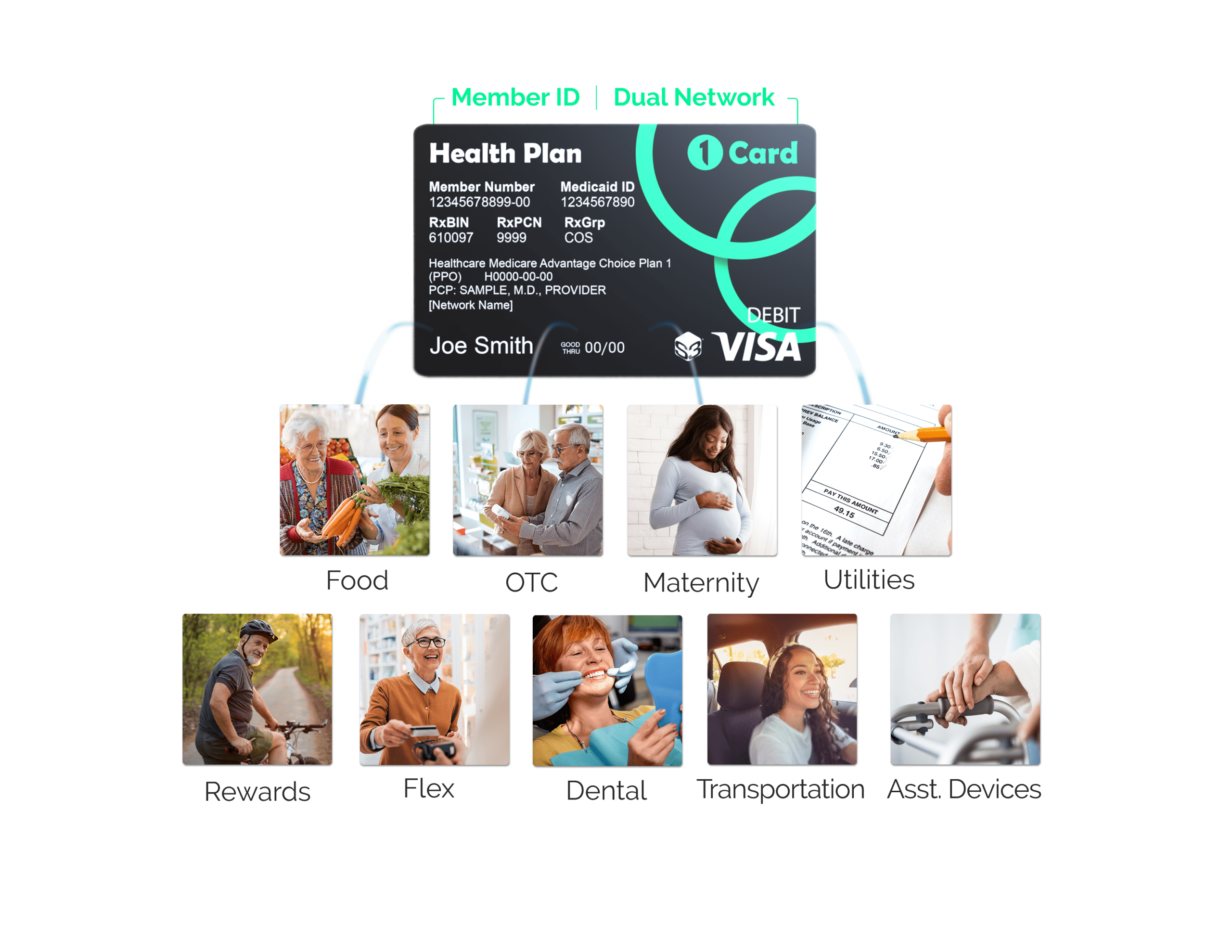This facility represents a healthcare provider offering a range of medical services to the community. It functions as a regional center, suggesting a broader service area than a local clinic, and it is affiliated with a larger network, which often indicates adherence to specific standards and protocols. Examples of such facilities exist across the United States, each providing vital healthcare to their respective regions.
The advantages of such a medical institution are numerous. It serves as a crucial resource for residents, providing access to specialized medical care that may not be available in smaller clinics. Its affiliation with a larger system allows for resource sharing, best practice implementation, and potentially lower costs through economies of scale. Historically, these institutions have evolved to meet the growing healthcare needs of their communities, often expanding services and facilities over time.
The subsequent discussion will delve into specifics regarding services offered, community impact, and the broader healthcare landscape within which this entity operates. Further sections will provide information pertinent to its role in patient care, technological advancements implemented, and its contribution to the well-being of the population it serves.
1. Regional Healthcare Services
The term “Regional Healthcare Services” describes the coordinated provision of medical care across a defined geographic area. The existence of facilities such as Intermountain Health St. Mary’s Regional Hospital directly facilitates the delivery of such services. This institution acts as a central hub, consolidating specialized medical expertise, advanced equipment, and a broad range of medical disciplines within its walls. This concentration of resources reduces the need for patients to travel long distances for complex medical treatments. For example, a resident in a rural community requiring specialized cardiac surgery can access that care closer to home, thanks to the regional service model embodied by St. Mary’s.
The importance of Regional Healthcare Services as a component of Intermountain Health St. Mary’s Regional Hospital is multifaceted. It dictates the scope of services offered, influencing staffing levels, equipment acquisitions, and infrastructure development. A commitment to regional service necessitates offering a range of specialties, from cardiology and oncology to orthopedics and neurology. This comprehensive approach ensures that the majority of healthcare needs within the defined region can be met locally. The hospital’s policies and procedures are also shaped by its regional role, with protocols designed to handle referrals from smaller, outlying clinics and to coordinate care across different providers.
In conclusion, Intermountain Health St. Mary’s Regional Hospital is, in essence, a practical manifestation of the “Regional Healthcare Services” concept. Its operation exemplifies how a centralized facility can improve healthcare access and outcomes for a geographically dispersed population. Challenges remain in ensuring equitable access and addressing disparities in rural healthcare, but the regional model, exemplified by institutions like St. Mary’s, provides a framework for improving healthcare delivery across a wide area.
2. Intermountain Affiliation Benefits
The affiliation with Intermountain Health provides St. Mary’s Regional Hospital with distinct advantages that directly influence its operational capabilities and patient care standards. These benefits range from access to a broader network of resources and expertise to standardized protocols and enhanced technological infrastructure. One of the most significant impacts is access to Intermountain Health’s system-wide electronic health records (EHR). This enables seamless data sharing between St. Mary’s and other Intermountain facilities, facilitating coordinated care for patients who may receive treatment at multiple locations within the system. For example, a patient initially treated at St. Mary’s can transition to another Intermountain facility with their complete medical history readily available, thereby reducing the risk of errors and improving continuity of care.
Beyond EHR integration, the affiliation grants St. Mary’s access to Intermountain’s established best practices and quality improvement initiatives. This includes standardized protocols for various medical procedures, as well as ongoing monitoring and analysis of patient outcomes. St. Mary’s can leverage Intermountain’s data analytics capabilities to identify areas for improvement in its own performance and implement evidence-based practices to enhance patient safety and treatment efficacy. Additionally, the Intermountain affiliation may provide St. Mary’s with preferential access to group purchasing agreements for medical supplies and equipment, potentially lowering operating costs and allowing for investment in advanced technologies. A real-world instance would be the implementation of a standardized sepsis protocol across the Intermountain network, leading to demonstrably improved outcomes for sepsis patients at all affiliated hospitals, including St. Mary’s.
In summary, the benefits of the Intermountain Health affiliation are integral to the functionality and effectiveness of St. Mary’s Regional Hospital. These advantages provide tangible support for clinical excellence, operational efficiency, and financial stability. However, challenges may arise in balancing centralized standardization with the unique needs of the local community served by St. Mary’s. Navigating this balance is crucial for maximizing the benefits of the Intermountain affiliation while maintaining the hospital’s responsiveness to the specific healthcare requirements of its regional patient population.
3. Comprehensive Medical Specialties
The phrase “Comprehensive Medical Specialties” is inextricably linked to the operational definition of Intermountain Health St. Mary’s Regional Hospital. The existence of a broad array of medical specialties is not merely an attribute of the institution; it is a fundamental requirement for its designation as a regional hospital. The availability of numerous specialties stems directly from the hospital’s mission to serve a large and diverse population, encompassing a wide range of medical needs. Without this comprehensive offering, the facility would likely function as a smaller, more specialized medical center with a limited geographic reach. As an example, the simultaneous presence of cardiology, oncology, neurology, and orthopedic departments enables the hospital to address both acute and chronic conditions, spanning multiple organ systems and patient demographics. The causal relationship is clear: regional hospitals, by definition, must offer comprehensive specialties; otherwise, they cannot adequately serve their intended populations.
The importance of “Comprehensive Medical Specialties” as a component of Intermountain Health St. Mary’s Regional Hospital is manifested in several ways. It dictates the hospital’s infrastructure, staffing models, and resource allocation. Each specialty requires dedicated space, specialized equipment, and highly trained personnel. This necessitates significant capital investment and ongoing operational costs. The hospital’s administrative structure must also be designed to support the coordination of care across these diverse specialties, ensuring seamless transitions for patients requiring multi-disciplinary treatment. For instance, a patient presenting with stroke symptoms may require immediate intervention from the neurology department, followed by rehabilitation services provided by physical and occupational therapists. The hospital’s ability to facilitate this coordinated response is a direct consequence of its commitment to providing comprehensive specialties.
The practical significance of understanding the connection between “Comprehensive Medical Specialties” and Intermountain Health St. Mary’s Regional Hospital lies in its implications for healthcare planning and resource management. This understanding allows for informed decision-making regarding service expansion, technology acquisition, and workforce development. Recognizing the essential role of comprehensive specialties also highlights the need for ongoing evaluation and improvement to ensure that all departments are meeting the evolving needs of the community. Furthermore, this understanding informs the hospital’s role in public health initiatives and its collaboration with other healthcare providers in the region. While challenges remain in ensuring equitable access to all specialties and maintaining high-quality care across all departments, the commitment to comprehensiveness remains a defining characteristic of Intermountain Health St. Mary’s Regional Hospital and a critical element in its mission to serve the health needs of the region.
4. Community Health Impact
The phrase “Community Health Impact” represents a central tenet of Intermountain Health St. Mary’s Regional Hospital’s mission and operational strategy. This impact extends beyond the immediate provision of medical care within the hospital walls, encompassing proactive measures designed to improve the overall well-being of the surrounding population. The hospital’s existence, therefore, is not merely a reactive response to illness but also a proactive investment in preventative health initiatives. One illustrative example is the implementation of community-based health education programs focusing on chronic disease prevention, such as diabetes and heart disease. These programs directly address modifiable risk factors and empower individuals to take control of their health, ultimately reducing the burden of chronic illness on the community and the healthcare system.
The importance of “Community Health Impact” as a component of Intermountain Health St. Mary’s Regional Hospital manifests in various operational decisions and strategic partnerships. It influences the allocation of resources toward public health programs, the development of specialized clinics catering to specific community needs, and the establishment of collaborations with local organizations to address social determinants of health. For instance, the hospital might partner with a local food bank to provide nutritional support to underserved populations, thereby addressing a key social determinant of health that can significantly impact chronic disease outcomes. The effectiveness of these initiatives is often measured through community health assessments, which provide valuable data on the prevalence of health issues and inform the development of targeted interventions. The hospital’s community outreach programs, participation in local health fairs, and support for community health workers further exemplify its commitment to actively improving the health of the region.
Understanding the connection between “Community Health Impact” and Intermountain Health St. Mary’s Regional Hospital holds practical significance for policy makers, healthcare administrators, and community members alike. It highlights the need for a holistic approach to healthcare that considers not only medical interventions but also the broader social, economic, and environmental factors that influence health outcomes. This understanding informs the development of policies that support community health initiatives, the allocation of resources toward preventative care, and the creation of partnerships that address the root causes of health disparities. While challenges remain in accurately measuring the long-term impact of community health programs and ensuring equitable access to resources, the commitment to improving community health remains a core value of Intermountain Health St. Mary’s Regional Hospital and a driving force behind its efforts to create a healthier community for all.
5. Advanced Medical Technology
The integration of “Advanced Medical Technology” is a critical determinant of the operational capabilities and service offerings at Intermountain Health St. Mary’s Regional Hospital. The hospital’s capacity to provide cutting-edge diagnostics, minimally invasive surgical procedures, and targeted therapies is directly contingent upon the availability and effective utilization of advanced technological resources. The deployment of technologies such as Magnetic Resonance Imaging (MRI), Computed Tomography (CT) scanners, and robotic surgical systems allows for more precise diagnoses, reduced patient recovery times, and improved treatment outcomes. For instance, the utilization of advanced imaging techniques enables radiologists to detect subtle anomalies that may be missed by conventional methods, leading to earlier diagnosis and more effective treatment of diseases such as cancer. This direct cause-and-effect relationship underscores the importance of technological advancement in modern healthcare delivery.
The strategic investment in “Advanced Medical Technology” at Intermountain Health St. Mary’s Regional Hospital also reflects a commitment to attracting and retaining highly skilled medical professionals. Physicians and surgeons are increasingly drawn to facilities that offer access to the latest technological tools, enabling them to provide the most advanced care possible. This, in turn, enhances the hospital’s reputation as a center of medical excellence and strengthens its ability to compete in the healthcare marketplace. Furthermore, advanced technology often facilitates more efficient workflows, reduces the risk of medical errors, and improves patient safety. For example, the implementation of electronic medication administration systems minimizes the potential for medication errors and ensures accurate tracking of patient medications throughout their hospital stay. Moreover, advanced telemedicine platforms enable remote consultations and monitoring, extending the reach of specialized medical expertise to underserved communities.
In summary, the synergy between “Advanced Medical Technology” and Intermountain Health St. Mary’s Regional Hospital is undeniable. The hospital’s ability to deliver high-quality, efficient, and patient-centered care is intrinsically linked to its investment in and effective utilization of advanced technological resources. Challenges remain in ensuring equitable access to advanced technology across all patient populations and in managing the escalating costs associated with these technologies. However, the commitment to technological innovation remains a driving force behind Intermountain Health St. Mary’s Regional Hospital’s mission to provide the best possible care to the community it serves. This commitment ensures the facility remains at the forefront of medical advancements and continues to improve the health and well-being of its patients.
Frequently Asked Questions about Intermountain Health St. Mary’s Regional Hospital
The following addresses common inquiries regarding services, affiliations, and operational aspects of Intermountain Health St. Mary’s Regional Hospital. It is intended to provide concise and factual information.
Question 1: What range of medical services are provided?
Intermountain Health St. Mary’s Regional Hospital offers a comprehensive suite of medical services, including but not limited to: emergency care, surgical services, cardiology, oncology, obstetrics and gynecology, orthopedics, neurology, and rehabilitation services. The hospital also provides diagnostic imaging, laboratory services, and pharmacy services.
Question 2: How does the affiliation with Intermountain Health benefit patients?
The affiliation with Intermountain Health allows St. Mary’s Regional Hospital access to a broader network of resources, expertise, and standardized protocols. This facilitates coordinated care, access to best practices, and potential cost savings through economies of scale. Patients benefit from enhanced quality and safety standards, as well as access to specialized services not typically available at smaller, independent hospitals.
Question 3: What is the service area of Intermountain Health St. Mary’s Regional Hospital?
As a regional hospital, Intermountain Health St. Mary’s Regional Hospital serves a geographic area that extends beyond the immediate city limits. The specific service area encompasses surrounding communities and rural regions where access to specialized medical care may be limited. The hospital functions as a referral center for smaller clinics and physician practices within this region.
Question 4: What is the hospital’s policy on patient privacy and data security?
Intermountain Health St. Mary’s Regional Hospital adheres to strict policies and procedures to protect patient privacy and data security. These policies are in accordance with federal and state regulations, including the Health Insurance Portability and Accountability Act (HIPAA). The hospital employs robust security measures to safeguard electronic health records and patient information from unauthorized access or disclosure.
Question 5: Does Intermountain Health St. Mary’s Regional Hospital accept all insurance plans?
Intermountain Health St. Mary’s Regional Hospital participates in a wide range of insurance plans. Patients are advised to verify coverage with their insurance provider prior to receiving services. The hospital also offers financial assistance programs to eligible patients who may have difficulty affording medical care.
Question 6: How can individuals provide feedback or express concerns about their experience?
Intermountain Health St. Mary’s Regional Hospital values patient feedback and encourages individuals to share their experiences. Feedback can be provided through various channels, including patient satisfaction surveys, online forms, and direct communication with hospital staff. All feedback is reviewed and used to improve the quality of care and patient experience.
This FAQ provides a general overview. For specific inquiries, direct communication with Intermountain Health St. Mary’s Regional Hospital is recommended.
Subsequent sections will explore the hospital’s community involvement and future directions.
Navigating Healthcare Effectively
The following tips are designed to assist individuals in effectively navigating the healthcare system, informed by the resources and services commonly found at regional hospitals.
Tip 1: Understand Insurance Coverage. Thoroughly review health insurance policies to ascertain covered services, co-pays, deductibles, and in-network providers. This understanding facilitates informed decisions regarding treatment options and potential out-of-pocket expenses. Contact the insurance provider directly for clarification on specific coverage details.
Tip 2: Maintain Accurate Medical Records. Keep a comprehensive record of medical history, medications, allergies, and previous treatments. This documentation can be invaluable during medical appointments and emergencies, ensuring that healthcare providers have a complete and accurate understanding of the individual’s health status. Electronic health record systems, when accessible, streamline this process.
Tip 3: Prepare for Medical Appointments. Prior to a medical appointment, compile a list of questions and concerns to discuss with the healthcare provider. This proactive approach maximizes the value of the appointment and ensures that all relevant issues are addressed. Document the provider’s responses and recommendations for future reference.
Tip 4: Utilize Available Resources. Regional hospitals often provide a range of resources, including patient education materials, support groups, and financial assistance programs. Explore these resources to enhance understanding of medical conditions, manage healthcare costs, and connect with others facing similar challenges. Hospital websites and patient advocates can provide information on available services.
Tip 5: Seek Second Opinions When Necessary. For complex medical conditions or significant treatment decisions, consider seeking a second opinion from another qualified healthcare provider. This practice can provide additional insights, alternative perspectives, and reassurance regarding the chosen course of action. Insurance policies may require or facilitate second opinions.
Tip 6: Adhere to Treatment Plans. Following a healthcare provider’s recommended treatment plan is crucial for achieving optimal outcomes. This includes taking medications as prescribed, attending follow-up appointments, and making necessary lifestyle modifications. Communicate any difficulties or concerns regarding the treatment plan to the healthcare provider promptly.
Tip 7: Advocate for Patient Rights. Familiarize oneself with patient rights, including the right to privacy, the right to informed consent, and the right to access medical records. Assert these rights when necessary to ensure that healthcare is delivered ethically and respectfully. Hospital patient representatives can provide guidance on patient rights and responsibilities.
Adherence to these principles can empower individuals to become active participants in their healthcare and optimize their experiences within the healthcare system. Understanding and utilizing available resources further contributes to improved health outcomes and greater satisfaction with medical care.
The concluding section will summarize key points and offer a final perspective.
Conclusion
This exposition has explored various facets of Intermountain Health St. Mary’s Regional Hospital, emphasizing its role as a regional healthcare provider, its affiliation benefits, the breadth of its medical specialties, its community health impact, and its embrace of advanced medical technology. The analysis has highlighted the institution’s contributions to the health and well-being of its service area, while also acknowledging the challenges inherent in delivering comprehensive and equitable healthcare.
The sustained viability and relevance of Intermountain Health St. Mary’s Regional Hospital hinge on continued investment in both human capital and technological infrastructure, coupled with a proactive approach to addressing evolving community health needs. The institution’s future trajectory will be shaped by its ability to adapt to a dynamic healthcare landscape, embracing innovation while remaining steadfast in its commitment to providing high-quality, patient-centered care. The ongoing assessment and enhancement of its operational efficiencies and clinical outcomes will ultimately determine its long-term success and its lasting impact on the health of the region it serves.



